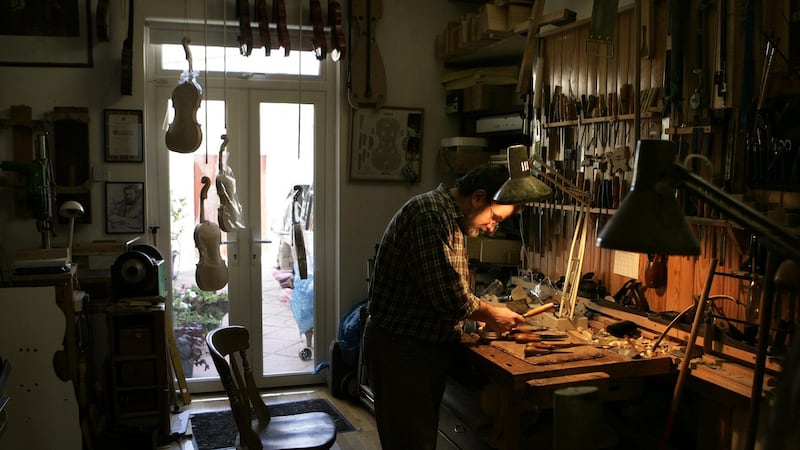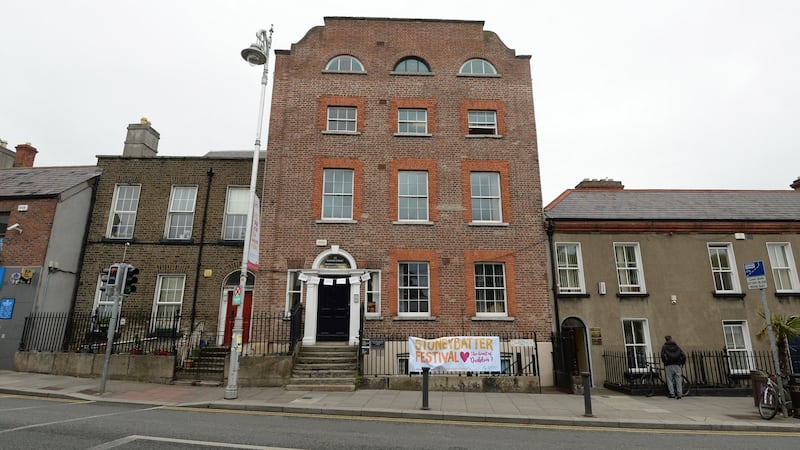Now in its second year, the Stoneybatter Festival offers a programme of nearly 100 events, encompassing music, food, arts, culture, entertainment and heritage over the weekend.
Today, the festival, which began yesterday, will host its Open House, which consists of a handful of unusual properties opening their doors to visitors throughout the day. The buildings taking part include a former police barracks, the birthplace of a poet and a hotel found in the pages of Ulysses.
President Michael D Higgins will act as the guest of honour at a family fun day tomorrow.
But let's start at 83 Manor Street, a two-storey terraced house and birthplace of poet Austin Clarke. The house is now home to another artist, violin maker James Beatley.

The crimson exterior of the building showcases the plaque dedicated to the poet who lived there , separating the structure from its neighbours. Beatley and his wife moved into the home in 1982 and have attempted to keep the house in the same configuration as it was originally, but all the internal walls had to be rebuilt from scratch.
The instrument maker had no idea about the building's artistic roots when purchasing the home. "When we bought the house, we didn't know anything about Austin Clarke, until we were approached by his two two sons, and Paul Durcan from Poetry Ireland. "
Last year, the granddaughter and great-granddaughter of Clarke, who was born in number 83 in 1896, visited the property during the Open House event.
All of a sudden there was a queue of a hundred people outside the door
Although the entire house is not open to the public, people are invited to explore its front room which contains Beatley’s workshop. The walls are adorned with violins in varying shades of amber and brown which hang from hooks.
Polished cellos
A crowd of polished cellos are bundled into a corner. They include his hundredth instrument, a cello he made himself. The scroll or neck root is adorned with ornate carvings; on its back rests a fern wreath, Irish harp and three castles.
This piece of art alone is reason enough to visit the house, though it’s also worth walking by in spring when a magnificent magnolia comes into bloom.
Beatley hadn’t known what to expect of the first Open House last year. “All of a sudden there was a queue of a hundred people outside the door.”
It is estimated that 180 people visited the house that day. “I was surprised at how many people knew an awful lot about Austin Clarke. Some people were quoting poetry while they were coming in.”
Meanwhile, an imposing building at 42 Manor Street, a short distance away, is also open to the public today.

Built in the 1740s, it was once a school for young women until becoming a barracks for the Dublin Metropolitan Police in 1870. Later, it was a Garda station and remained so until the 1940s.
In more recent years, it has been resurrected by Dublin City Council and is now home to the Gateway Project education centre.
Co-ordinator Carmel Brien acts as our guide, explaining that the building was derelict when it was given to the community.
“An architect said to me, ‘Carmel, you’d be as well off to let them knock that down and build you a new building, it would be cheaper.’ Can you imagine the loss of this lovely building and the history?”
The Gateway Project offers Fetac-accredited training and education programmes, with a creche for local children. “We had 15 people in the last two years who completed their level six here in Gateway, which never happened in a community setting.”
Lookout tower
On the history of the building, it was most likely built by a merchant – the lookout tower at the top of the house lending a clue. Brien takes us up the pale grey wooden staircase towards this, the highest point in the house. “When you look out that main window you will see right down to the Liffey] quay side.”
For now, the house is an important part of the community, surviving on rents, donations and Government funding.
There is a play area in the backyard. The project architect, Ruth Bradfield, won an award for her design. Children from outside of the centre regularly drop in to use the adventure area.
Also opening its doors on Saturday is 33 Manor Street, home to the Chrysalis Community Drug Project. The protected building was constructed in 1820 and previous tenants have included the Law Society Of Ireland.
The original windows and doorcase have been lost but the house is said to have maintained a significant proportion of its Georgian architecture.
Those who work there are hoping that a visit to the building will challenge perceptions of a community-based drug treatment centre.
Áine Tyers, a member of the board of management, describes it as a “bright, warm and vibrant space that means so much to those who attend and work there”.
Slightly further afield, 55 Prussia Street is home to Saor-Ollscoil na hÉireann, which provides third level education for mature students in the area of the humanities and social sciences.
It and can easily be reached in under 10 minutes by foot. The house was built between 1730 and 1740 and was once owned by the Jameson family of whiskey fame.
When John Jameson died in 1861, the house became a hotel for the traders in the cattle market. Known as the Old City Arms Hotel (not the original name), it is said to have been a haunt of James Joyce, who made it the home of Leopold and Molly Bloom in Ulysses.
On Saturday, Joycean scholar/performer Proinsias Killeen will be doing readings, which will take place every hour on the hour.
All of the above properties will be open for viewing on Saturday from 2-5pm, except 83 Manor Street which will remain open until 6pm.










